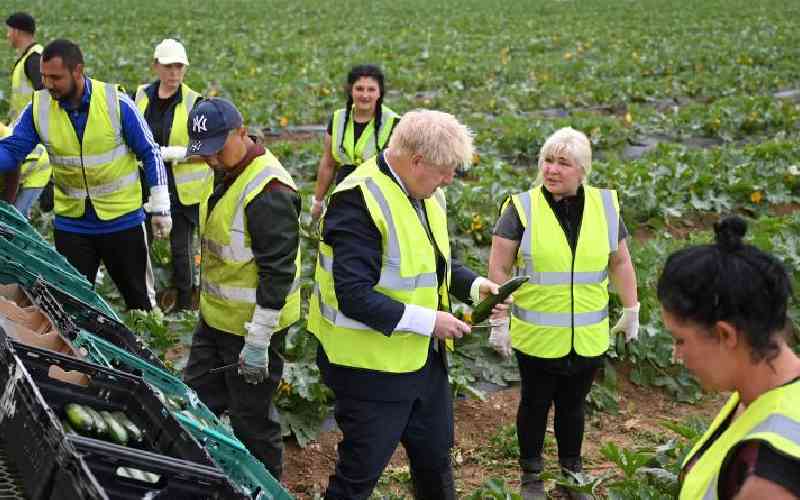NAIROBI: Kenya is sick, and many speakers claim to know what the country’s greatest ailment is. Some of the problems cited include low levels of education, lack of infrastructure, lack of leadership from the political class, tribalism and recently, insecurity.
Others, especially the political class, identify poverty, disease and ignorance as the most deadly, which they endlessly promise during campaigns to end.
But how come we have not found a silver bullet?
Like with any other patient, it is frustrating to not know what is ailing us. The first step towards treatment is correct diagnosis. The problem is that we are spending our resources on possible solutions without knowing the exact ailment.
As Kenyans, we need a strategy. We need sets of choices and activities that we take as a nation to realise our desired destiny.
During his visit to Kenya, US President Barrack Obama said Kenya is at a crossroads — between peril and prosperity. We ought to make choices that will lead us to prosperity.
Kenya has been known as a country with great promise, a new frontier, a rising star, but will we ever take our place at the table of the world economy?
Whether the 21st Century is Africa’s century, or Africa itself is a 21st opportunity, is debatable. But one undeniable fact is that Africa’s potential is still not fully tapped.
Though Kenya launched Vision 2030 a few years ago, we are still far from realising it. This blueprint is pegged on having achieved the Millennium Development Goals (MDGs) by 2015 as a first step.
The year 2015 is coming to an end, and it is official that MDGs have not been realised, yet Kenya pursues Vision 2030 without any review. Do you see the problem?
THE CONSEQUENCES
Clearly, Kenya still keeps hope alive. We talk about mega-projects such as the Standard Gauge Railway, Lapsset and oil discovery. We also think of smaller projects, like creating incentives for the informal sector and empowering the National Youth Service. But what, really, is Kenya’s problem?
We are told that the country was ahead of South Korea at independence. What is it that made South Korea overtake Kenya?
Currently, Mauritius, which has neither mineral deposits nor oil, has the highest per capita income in Africa. What has Mauritius got right that we have not?
The problem, it seems, is mediocrity — a disease that by nature does not allow us to diagnose and prescribe treatment.
Stay informed. Subscribe to our newsletter
If mediocrity cuts to the heart of everything we do, then even the choices we make, the prescriptions we give and the performance appraisal of our leaders all become mediocre, as they are based on mediocre Critical Success Factors (CSFs).
Mediocrity, in this context, means “the orientation to avoid thinking critically, the consequence of which is the production of a performance that isn’t satisfactory”. Our problems in Kenya, as in other countries, have their roots in mediocrity.
Mediocrity has been there for ages. Given that it is a problem of the world, what any country has achieved is a reflection of its level of mediocrity.
The post-election violence of 2007-8 in Kenya had its roots in mediocrity. No wonder the youth involved asked for forgiveness on the grounds that they did not know what they were doing.
Mediocrity is our greatest ailment, but what is its prescription? Critical thinking.
South Korea, Singapore and Mauritius are ahead of us simply because, at one point, they got a critical thinker to lead them. It is possible in Kenya. Take an example of the late John Michuki who transformed the matatu industry — he did not simply uncritically follow the appointing authority.
Let us make our choices critically and set our standards high to march towards our destiny, which is prosperity. This way, we shall eventually come up with the right measures to transform Kenya.
The writer is MBA Academic Director and senior lecturer, strategy and execution, Strathmore Business School.
[email protected]
 The Standard Group Plc is a
multi-media organization with investments in media platforms spanning newspaper
print operations, television, radio broadcasting, digital and online services. The
Standard Group is recognized as a leading multi-media house in Kenya with a key
influence in matters of national and international interest.
The Standard Group Plc is a
multi-media organization with investments in media platforms spanning newspaper
print operations, television, radio broadcasting, digital and online services. The
Standard Group is recognized as a leading multi-media house in Kenya with a key
influence in matters of national and international interest.
 The Standard Group Plc is a
multi-media organization with investments in media platforms spanning newspaper
print operations, television, radio broadcasting, digital and online services. The
Standard Group is recognized as a leading multi-media house in Kenya with a key
influence in matters of national and international interest.
The Standard Group Plc is a
multi-media organization with investments in media platforms spanning newspaper
print operations, television, radio broadcasting, digital and online services. The
Standard Group is recognized as a leading multi-media house in Kenya with a key
influence in matters of national and international interest.









